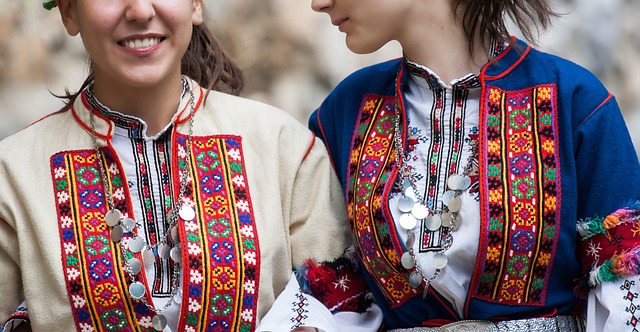Discover Modern Indian Dresses – A Complete Guide
Indian dresses represent a rich tapestry of cultural heritage, artistic expression, and evolving fashion sensibilities. From elaborate wedding lehengas to everyday salwar kameez, these garments showcase intricate embroidery, vibrant colors, and diverse regional influences. As global fashion embraces diversity, modern Indian dresses have gained international recognition for their unique blend of traditional craftsmanship and contemporary design elements.

Indian dresses embody centuries of cultural evolution, artistic traditions, and regional diversity. These garments aren’t just clothing items but storytellers that narrate India’s rich heritage through their silhouettes, embroidery techniques, and fabric choices. Modern Indian dresses have successfully bridged the gap between traditional aesthetics and contemporary fashion needs, making them increasingly popular worldwide. Whether for special occasions or everyday wear, Indian dresses offer versatility, comfort, and distinctive style that sets them apart in the global fashion landscape.
What is an Indian Dress and Why is it Special?
Indian dresses encompass a wide range of traditional garments that vary across the country’s diverse regions. What makes these dresses special is their intricate craftsmanship and cultural significance. Each piece tells a story through its design elements—from the delicate zari work of Banarasi sarees to the mirror embellishments of Gujarati chaniya cholis. The specialness of Indian dresses lies in their ability to preserve heritage while evolving with modern sensibilities.
The uniqueness of Indian dresses stems from their handcrafted nature. Many traditional techniques like block printing, bandhani (tie-dye), and chikankari embroidery require skilled artisans who have inherited these crafts through generations. This human touch infuses each garment with character and distinction that machine-made clothing often lacks.
Additionally, Indian dresses are known for their adaptability to various body types and occasions. The draping techniques of sarees, the flowing silhouettes of anarkalis, and the comfortable fit of salwar kameez make these garments universally flattering and functional while maintaining their aesthetic appeal.
Why Choose Modern Indian Dresses?
Modern Indian dresses offer the perfect blend of traditional aesthetics and contemporary functionality. Today’s designers have reimagined classic silhouettes with modern elements—creating fusion wear that appeals to younger generations while honoring cultural roots. These adaptations include pre-stitched sarees, dhoti pants paired with crop tops, and cape-style kurtas that combine ease of wear with traditional elegance.
Sustainability is another compelling reason to choose modern Indian dresses. Many traditional Indian textiles and techniques are eco-friendly, using natural dyes and handloom processes that have minimal environmental impact. As global fashion moves toward more sustainable practices, these age-old methods are being recognized for their environmental benefits.
The versatility of modern Indian dresses also makes them practical choices for diverse settings. Contemporary designers create pieces that transition seamlessly from workplace environments to festive gatherings. A simple kurta can be styled differently for office wear or weekend outings, making modern Indian dresses cost-effective and adaptable to various lifestyle needs.
Types of Indian Dresses Popular in 2025
In 2025, several traditional Indian dress styles have evolved to incorporate modern elements while maintaining their cultural essence. The saree continues to be reinvented with pre-stitched variations, innovative draping styles, and contemporary prints. Designer sarees featuring geometric patterns, abstract art, and unconventional color combinations have gained popularity among younger generations seeking to express individuality while honoring tradition.
Anarkali suits have transformed with asymmetrical hemlines, cape overlays, and fusion elements. The traditional floor-length Anarkali has been joined by mid-length and knee-length variations that offer greater mobility while preserving the signature flare. These modern adaptations often feature minimalist embroidery focused on strategic placement rather than all-over work.
Dhoti-style garments have seen a significant revival, with dhoti pants paired with structured tops or crop blouses becoming staples in festive wardrobes. Similarly, the sharara and gharara sets have been reimagined with contemporary silhouettes and innovative fabric combinations that blend traditional craftsmanship with modern aesthetics.
Indo-western fusion wear has emerged as a dominant category, featuring saree gowns, jacket lehengas, and palazzo-kurta sets that combine Eastern and Western design elements. These hybrid creations offer versatility for global Indians navigating multiple cultural contexts and occasions.
How to Choose the Right Indian Dress?
Selecting the perfect Indian dress requires consideration of several factors, beginning with the occasion. For formal events like weddings or religious ceremonies, elaborate lehengas, heavy silk sarees, or embellished Anarkali suits are appropriate. For semi-formal gatherings, lighter silk sarees, embroidered suit sets, or fusion wear can strike the right balance between elegance and comfort.
Body type should guide silhouette choices. Petite individuals might opt for vertical patterns, straight-cut kurtas, or pre-pleated sarees that create an illusion of height. Those with fuller figures may find A-line kurtas, well-draped sarees, or anarkali suits particularly flattering. Understanding which cuts complement your body shape ensures confidence in your chosen attire.
Consider the season and location when selecting fabrics. Cotton and linen are ideal for summer or tropical climates, while silk, velvet, and heavier embroidered pieces are better suited for winter or air-conditioned venues. Regional styles can also inform your choice—lightweight Lucknowi chikankari for summer events or rich Banarasi weaves for formal winter celebrations.
Personal comfort should never be compromised. Even the most beautiful garment loses its appeal if you’re constantly adjusting or uncomfortable. Ensure proper fitting, manageable weight (especially for heavily embellished pieces), and appropriate lining for transparency concerns.
Indian Dress Price Guide (2025)
Indian dresses span a wide price spectrum depending on craftsmanship, designer involvement, materials, and embellishment techniques. Understanding this range helps consumers make informed purchasing decisions aligned with their budgets and needs.
| Dress Type | Quality Level | Price Range (INR) | Key Features |
|---|---|---|---|
| Cotton Kurta Sets | Entry-level | 1,000-3,000 | Block prints, simple embroidery, everyday wear |
| Cotton Kurta Sets | Premium | 3,000-8,000 | Designer cuts, handcrafted embroidery, superior fabrics |
| Silk Sarees | Standard | 5,000-15,000 | Traditional weaves, moderate work |
| Silk Sarees | Luxury | 15,000-100,000+ | Handwoven, pure zari, heritage techniques |
| Lehenga Choli | Casual/Semi-formal | 8,000-25,000 | Machine embroidery, synthetic mix fabrics |
| Lehenga Choli | Bridal/Designer | 50,000-500,000+ | Hand embroidery, pure fabrics, couture design |
| Anarkali Suits | Ready-made | 3,000-10,000 | Standard sizing, machine work |
| Anarkali Suits | Custom | 10,000-50,000+ | Tailored fit, detailed handwork, designer elements |
Prices, rates, or cost estimates mentioned in this article are based on the latest available information but may change over time. Independent research is advised before making financial decisions.
Factors influencing price include craftsmanship (hand versus machine embroidery), fabric quality (pure versus blended textiles), designer reputation, and customization level. Handwoven fabrics like Banarasi or Kanjeevaram silk command premium prices due to the labor-intensive creation process and cultural significance. Similarly, hand-embroidery techniques such as zardozi, gota patti, or aari work significantly increase garment value compared to machine-made alternatives.
Seasonal fluctuations also affect pricing, with costs typically rising before major festival seasons like Diwali or during the wedding season. Many consumers find value in purchasing during off-season sales or directly from artisan communities rather than through multiple retail channels.
Indian dresses represent a unique intersection of cultural heritage, artistic expression, and fashion evolution. From their historical significance to their modern adaptations, these garments continue to captivate fashion enthusiasts worldwide. Whether preserving traditional techniques or embracing contemporary innovations, Indian dresses offer wearers the opportunity to connect with rich cultural traditions while expressing individual style. As global fashion increasingly values diversity and craftsmanship, the timeless appeal of Indian dresses ensures their continued relevance in wardrobes across the world.




